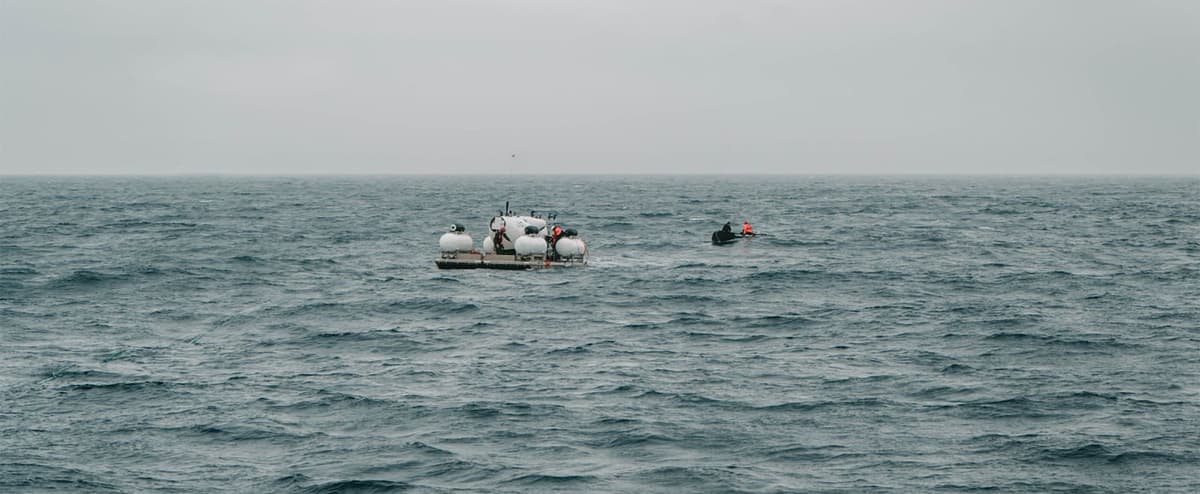Less than two days of oxygen: the United States, supported by Canada and France, are in a race against time to find alive the five passengers – an American, a Frenchman, a Briton and two Pakistanis – of a submersible left to visit the wreck of the Titanic at a depth of 4,000 meters in the North Atlantic.
• Read also: Missing submersible: three possible scenarios
• Read also: In 6 points: the race against time to save the crew of the missing submersible
• Read also: “You died before you understood what happened”, said one of the occupants in 2019
There are “about 40 hours of breathable air” left in this small submarine, the Titan, warned Tuesday a captain of the American coast guard, Jamie Frederick, during a press conference in Boston. He acknowledged that the research – which is gaining momentum – had so far “produced no results”.
Among those to be saved, a British businessman, Hamish Harding, 58, who announced on Instagram on Saturday his participation in this extreme, extraordinary scientific excursion steeped in history. The famous sinking of the Titanic in 1912 is one of the greatest transport disasters of the 20e century.
Former French naval officer Paul-Henri Nargeolet, 77, a specialist in the wreckage of the Titanic, is also on the trip, according to his family.
AFP
Aircraft deployed
Also on board for the $250,000 dive was Pakistani tycoon Shahzada Dawood, 48 and vice president of conglomerate Engro, who was on board with his 19-year-old son Suleman, according to the wealthy family, who confirmed that ” the contact [avait] been lost” since Sunday.
Finally, the company OceanGate Expeditions, organizer of the trip and whose American boss Stockton Rush is also on board, assured “explore and mobilize all options to bring the crew back safely”.

PHOTO FROM FACEBOOK/CHRISTINE DAWOOD
Designed to take five people into the abyss, the Titan began its descent on Sunday, about 6.5 meters long, and contact with the craft was lost less than two hours after its departure, according to authorities.
The US Coast Guard then dispatched two C-130 aircraft to the search area “about 1,450 km east of Cape Cod [côte nord-est des États-Unis] at a depth of about 4000 meters.
A third C-130 will be deployed on Tuesday, the Pentagon said.
The Canadian Coast Guard also mobilized an aircraft and a ship while France announced that the French Research Institute for the Exploitation of the Sea (Ifremer) was dispatching a boat and its robot.

VAT NEWS
“It can go wrong”
US President Joe Biden wants the Coast Guard, a body of the armed forces, to continue their search and the navy can be mobilized if necessary, assured the spokesman for the National Security Council of the White House, John Kirby.
American screenwriter Mike Reiss, producer of the famous series The Simpsonshas already left three times with OceanGate, including once in 2022 aboard the same submersible as the one that disappeared, he told the BBC.
A totally confusing experience, because “you almost always lose communication and find yourself at the mercy of the elements and that kind of stuff”.

AFP
According to him, everyone is perfectly aware of the dangers involved: “You have to sign a waiver before getting on and death is mentioned three times on the front page. It’s not a coach vacation, it can go wrong.”
Once at the bottom, “the compass immediately stopped working and just rotated. We had to struggle blindly at the bottom of the ocean, knowing that the Titanic was somewhere out there,” he said.
Two theories
Without having studied the craft itself, Alistair Greig, professor of marine engineering at University College London, raised two possible theories based on images of the device published by the press.
He reckons that if he had an electrical or communications problem he could have been brought to the surface, floating ‘waiting to be found’.
“Another scenario is that the hull has been damaged. So the prognosis is not good,” he said. And “very few vessels can go” to the depth it might have sunk, he said.
Leaving Southampton on April 10, 1912 to reach New York, the Titanic, the largest liner in the world at the time of its launch, was shipwrecked after hitting an iceberg five days later. Of the 2,224 passengers and crew, nearly 1,500 perished.
The wreck was discovered in 1985 650 kilometers off the Canadian coast in the international waters of the Atlantic Ocean.
Since then, maintaining the myth, treasure seekers and tourists have been visiting it.
